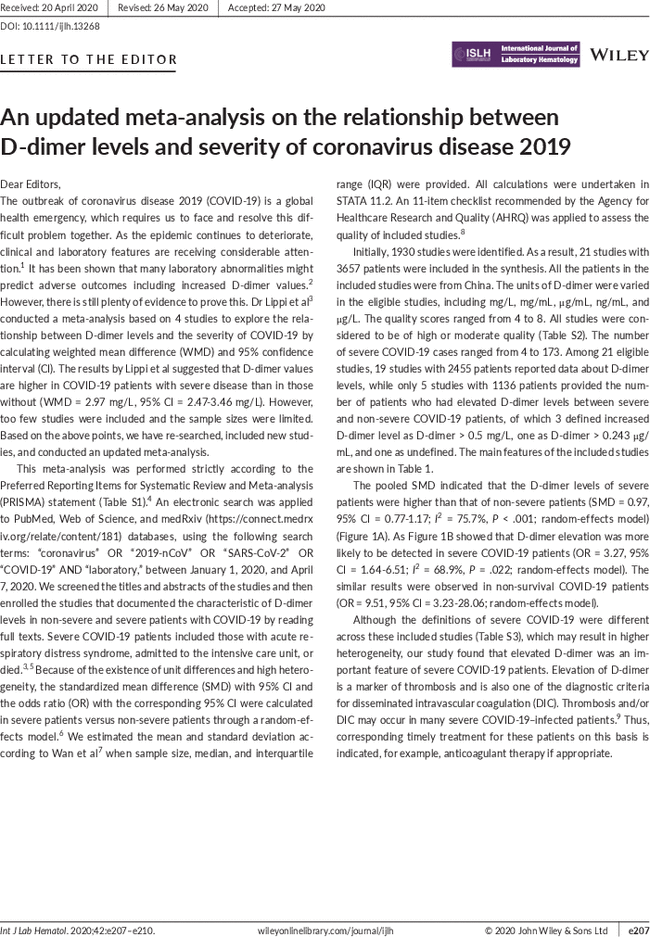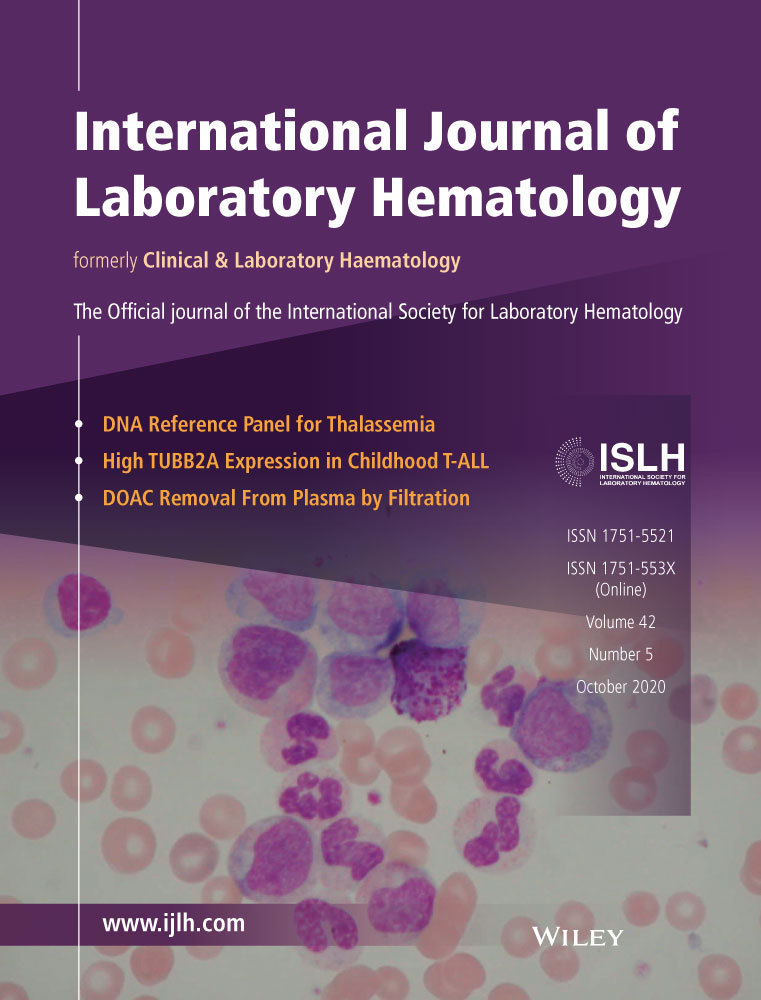An updated meta-analysis on the relationship between D-dimer levels and severity of coronavirus disease 2019
Li Shi
Department of Epidemiology, School of Public Health, Zhengzhou University, Zhengzhou, China
Search for more papers by this authorYing Wang
Department of Epidemiology, School of Public Health, Zhengzhou University, Zhengzhou, China
Search for more papers by this authorYadong Wang
Department of Toxicology, Henan Center for Disease Control and Prevention, Zhengzhou, China
Search for more papers by this authorGuangcai Duan
Department of Epidemiology, School of Public Health, Zhengzhou University, Zhengzhou, China
Search for more papers by this authorCorresponding Author
Haiyan Yang
Department of Epidemiology, School of Public Health, Zhengzhou University, Zhengzhou, China
Correspondence
Haiyan Yang, Department of Epidemiology, School of Public Health, Zhengzhou University, No. 100 of Science Avenue, Zhengzhou 450001, China.
Email: [email protected]
Search for more papers by this authorLi Shi
Department of Epidemiology, School of Public Health, Zhengzhou University, Zhengzhou, China
Search for more papers by this authorYing Wang
Department of Epidemiology, School of Public Health, Zhengzhou University, Zhengzhou, China
Search for more papers by this authorYadong Wang
Department of Toxicology, Henan Center for Disease Control and Prevention, Zhengzhou, China
Search for more papers by this authorGuangcai Duan
Department of Epidemiology, School of Public Health, Zhengzhou University, Zhengzhou, China
Search for more papers by this authorCorresponding Author
Haiyan Yang
Department of Epidemiology, School of Public Health, Zhengzhou University, Zhengzhou, China
Correspondence
Haiyan Yang, Department of Epidemiology, School of Public Health, Zhengzhou University, No. 100 of Science Avenue, Zhengzhou 450001, China.
Email: [email protected]
Search for more papers by this author
Supporting Information
| Filename | Description |
|---|---|
| ijlh13268-sup-0001-Appendix.docxWord document, 61.2 KB | Appendix |
Please note: The publisher is not responsible for the content or functionality of any supporting information supplied by the authors. Any queries (other than missing content) should be directed to the corresponding author for the article.
REFERENCES
- 1 World Health Organization. Coronavirus Disease (COVID-2019) Situation Reports - 85. https://www.who.int/docs/default-source/coronaviruse/situation-reports/20200414-sitrep-85-covid-19.pdf?sfvrsn=7b8629bb_4. Accessed 15 April, 2020.
- 2Lippi G, Plebani M. Laboratory abnormalities in patients with COVID-2019 infection. Clin Chem Lab Med. 2020; 58(7): 1131-1134.
- 3Lippi G, Favaloro EJ. D-dimer is associated with severity of coronavirus disease 2019: a pooled analysis. Thromb Haemost. 2020; 120(05): 876-878.
- 4Moher D, Liberati A, Tetzlaff J, Altman DG. Preferred reporting items for systematic reviews and meta-analyses: the PRISMA statement. Int J Surg. 2010; 8(5): 336-341.
- 5Henry BM, Lippi G. Chronic kidney disease is associated with severe coronavirus disease 2019 (COVID-19) infection. Int Urol Nephrol. 2020; 52(6): 1193-1194.
- 6Deeks JJ, Higgins JPT, Altman DG, et al. Chapter 10: Analysing data and undertaking meta-analyses. In: JPT Higgins, J Thomas, J Chandler, eds. Cochrane Handbook for Systematic Reviews of Interventions, 2nd edn. Chichester,UK: John Wiley & Sons; 2019.
10.1002/9781119536604.ch10 Google Scholar
- 7Wan X, Wang W, Liu J, Tong T. Estimating the sample mean and standard deviation from the sample size, median, range and/or interquartile range. BMC Med Res Methodol. 2014; 14: 135.
- 8West S, King V, Carey TS, et al. Systems to rate the strength of scientific evidence. Evid Rep Technol Assess (Summ). 2002; 47: 1-11.
- 9Han H, Yang L, Liu R, et al. Prominent changes in blood coagulation of patients with SARS-CoV-2 infection. Clin Chem Lab Med. 2020; 58(7): 1116-1120.




